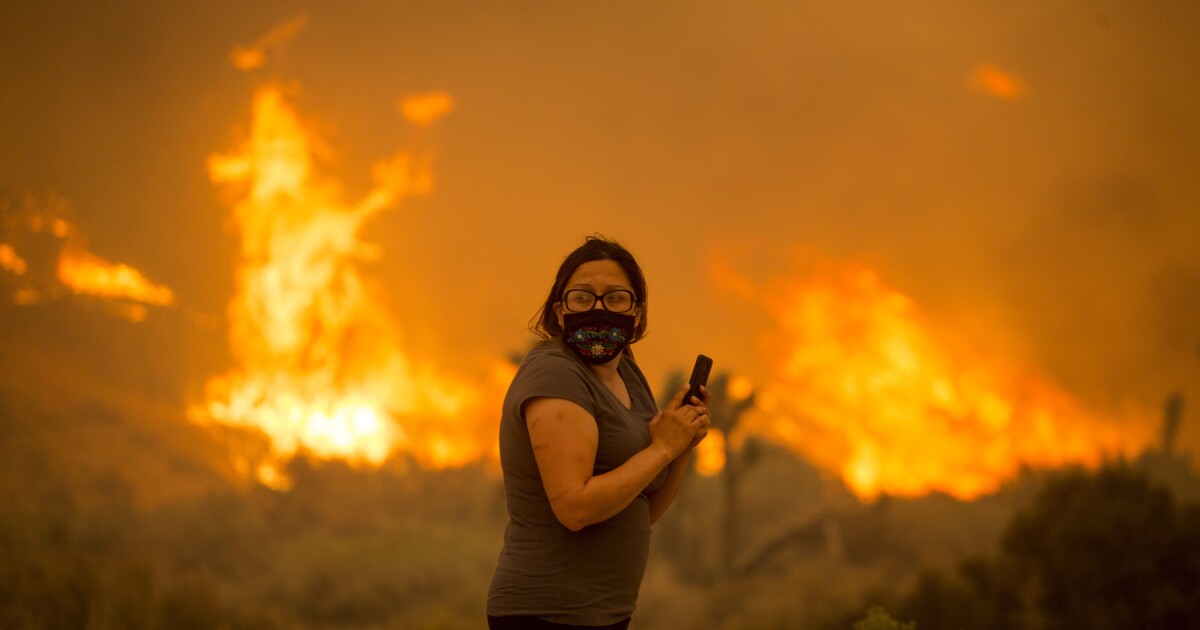It started out as an impressive light show on a weekend in mid-August: lightning crackled in the skies of northern and central California, landing in grasslands and vineyards.
The National Meteorological Service warned that the impact of lightning on a dry landscape “could lead to new forest fires.” It turned out to be an insufficient description of what could happen.
Thousands of lightning bolts sparked hundreds of fires in California and at least one in Oregon, setting the stage for some of the most destructive wildfires on the West Coast of the United States in recent history.
A month later, firefighters continue to fight them and at least 34 people have died in the states of California, Oregon and Washington.
“What was shocking to many people was the fact that this really changed the paradigm that people have in terms of their sense of security,” said Jim Gersbach, spokesman for the Oregon Department of Forestry. The fires passed “very close to populated areas, fanned by the winds and were practically unstoppable.”
The huge forest fires renewed a long-standing debate about whether climate change or a lack of vigorous forest management played a role this time. Several studies have found that global warming, which causes high temperatures and dries up flora, increases the likelihood of extreme events and contributes to their severity, but many experts have also argued that more needs to be done to surgically cut down forests and reduce debris so flames have less fuel.
Before the bolt of lightning struck, America’s west coast fire season had been slightly more severe than usual. In Oregon, authorities decided not to let the fires grow, ordering even small fires to be put out quickly by planes to prevent crowds of firefighters from being needed and leading to a possible spread of the coronavirus, Gersbach said.
But then came the weekend of August 15-16.
“It has been about 12 crazy hours in the Bay Area,” reported national service meteorologists after the electrical storm during which lightning struck the stretch of the iconic San Francisco Bay Bridge.
But that was only the first act.
The second occurred weeks later, when another unusual weather phenomenon occurred.
A wide area of high pressure stretching from Alaska to the desert in the southwest of the country caused Denver to witness a summer snowfall, while sending hot, dry winds toward the US Pacific coast, said Greg Jones, professor and research climatologist. at Linfield University in McMinnville, Oregon. Generally, the winds at this time of year go in the opposite direction.
Those winds carried the fires through trees and brush that had dried up during the summer, causing the fires to increase in size and carrying them into houses in rural areas. Many residents barely had time to evacuate their homes.
Jones reported that the weather conditions were “perhaps a once-in-a-generation event.”
For the first time in history, five wildfires, covering at least 100,000 acres (405 square kilometers), burned simultaneously in Oregon last week.
Firefighters from across the United States and Canada have flocked to the region to help fight the flames: There are more than 17,000 in California fighting more than twenty fires and more than 6,000 facing a dozen fires in Oregon.
About 13,700 square kilometers (5,300 miles) have been burned this year in California, more than ever, according to the California Department of Forestry and Fire Protection (CAL FIRE). In Oregon, the figure is about 4,000 square kilometers (1,560 square miles), almost double the 10-year average.
Residents desperately hope the rain will wash away the smoke from the wildfires. Rains were forecast in areas affected by the fires in Oregon, but have yet to come. California remains dry, although winds have already died down and temperatures have dropped, in part because smoke has covered the sun, helping firefighters. Little rain is forecast for Northern California and the Sierra Nevada.
Associated Press reporters John Antczak in Los Angeles, Sara Cline in Salem, Oregon, and Gillian Flaccus in Portland contributed to this report.
–


